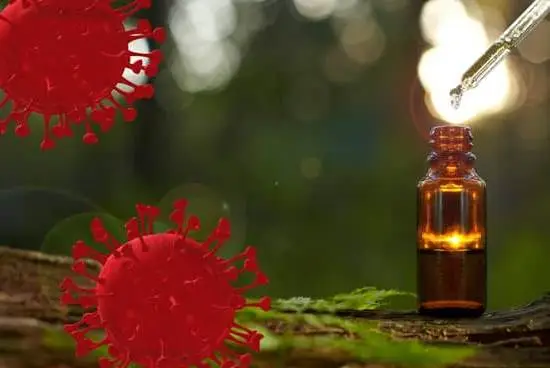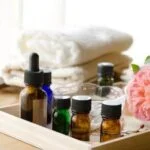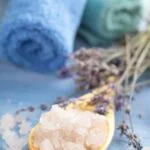In recent years, alternative therapies have gained significant popularity as people seek natural and holistic approaches to health and well-being. Among the various practices that fall under this umbrella, aromatherapy and essential oils have emerged as particularly prominent and widely embraced methods. While often used interchangeably, it is important to understand the fundamental differences between these two terms.
Aromatherapy refers to the therapeutic use of aromatic plant extracts, known as essential oils, to promote physical and psychological well-being. In contrast, essential oils are concentrated plant extracts obtained through a specific extraction process. By exploring the unique characteristics and applications of both aromatherapy and essential oils, individuals can make informed choices about incorporating these practices into their lives for maximum benefits.
The surge in popularity of alternative therapies reflects a growing preference for natural remedies that address mind, body, and spirit holistically. In response to this shift in consumer demand, aromatherapy has gained immense recognition for its potential healing properties. Rooted in ancient wisdom and practiced throughout history by various cultures worldwide, aromatherapy harnesses the power of scent to influence emotions, enhance mood, relieve stress, ease pain, and induce relaxation.
Essential oils play a central role in aromatherapy as they are the primary tools utilized in this practice. These highly concentrated plant essences capture the aromatic compounds found in different parts of plants such as flowers, leaves, bark, stems or roots.
Through specialized extraction methods such as steam distillation or cold-pressing, essential oils are carefully derived from these botanical sources while preserving their therapeutic elements. With an extensive range of essential oils available – each possessing distinct fragrance notes and medicinal properties – aromatherapy provides a diverse repertoire for promoting overall well-being.
By understanding what sets aromatherapy apart from essential oils alone, individuals can make informed decisions regarding their desired results when engaging with these practices. Although closely related concepts within the realm of alternative therapy solutions – both sharing grounding in the use of plant-based compounds – aromatherapy encompasses a broader approach that incorporates essential oils as one of its primary modalities.
This introductory article will delve deeper into the defining principles of aromatherapy, explore the vast array of essential oils used in this practice, and elucidate the key differences between aromatherapy and essential oils alone. As we embark on this exploration, it is essential to keep an open mind and recognize the potential benefits that can be derived from these natural remedies when utilized wisely and responsibly.
Defining Aromatherapy
Aromatherapy is an alternative therapy that utilizes the power of aromatic plant compounds to promote healing and well-being. It involves the use of essential oils, which are highly concentrated extracts derived from various parts of plants such as flowers, leaves, and bark. These essential oils are known for their distinct aromas and therapeutic properties.
Historically, the use of aromatic plants for medicinal purposes can be traced back to ancient civilizations such as Egypt, China, and India. Aromatherapy as we know it today, however, was developed in the early 20th century by a French chemist named René-Maurice Gattefossé. He accidentally discovered the healing properties of lavender oil when he applied it to a burn on his hand. This led to further research and development in the field of aromatherapy.
The principles of aromatherapy revolve around the idea that certain scents can have a powerful effect on our emotions and physical well-being. The inhalation or topical application of essential oils can stimulate our olfactory system and trigger specific responses in our brain and body. These responses can include relaxation, stress reduction, mood enhancement, pain relief, and improved sleep. Aromatherapy can be used alongside traditional medical treatments or as a complementary therapy to promote overall wellness.
With its rich historical background and proven benefits, aromatherapy has gained popularity as a natural and holistic approach to health and well-being. It is now widely practiced both professionally by trained aromatherapists and at home by individuals seeking natural remedies for common ailments. Whether through diffusing essential oils in a room, applying them topically through massage or skincare products, or inhaling them directly from a bottle or tissue, aromatherapy offers a versatile range of applications to suit various needs.
Exploring Essential Oils
Essential oils are a fundamental component of aromatherapy, as they are the main agents responsible for the therapeutic effects. These highly concentrated oils are derived from various parts of plants, including the flowers, leaves, stems, and roots. The extraction methods used to obtain essential oils can vary, but the most common techniques include steam distillation, cold-press extraction, and solvent extraction.
Extraction Methods
Steam distillation is the most widely used method for extracting essential oils. It involves passing steam through the plant material, causing the oil glands to burst and release their aromatic compounds. The steam carrying the volatile oil then passes into a condenser where it is cooled and separated into water and oil. The oil is collected as it floats on top of the water.
Cold-press extraction is commonly used for obtaining citrus essential oils such as lemon, orange, or grapefruit. This method involves mechanically pressing or squeezing the rind of the fruit to release its essential oil. The resulting liquid contains both the oil and juice from the fruit, which can be separated through centrifugation or decantation.
Solvent extraction is mainly utilized for plants that contain low amounts of essential oil or whose chemical composition makes them difficult to extract through other methods. In this process, a solvent such as hexane is applied to dissolve the essential oil from the plant material. Once dissolved, the solvent-oil mixture undergoes evaporation to separate the solvent from the pure essential oil.
Types of Essential Oils
There is a wide range of essential oils available in aromatherapy, each with its own distinct aroma and therapeutic properties. Some popular examples include lavender, tea tree, peppermint, eucalyptus, chamomile, and frankincense.
Lavender essential oil is known for its calming and soothing properties that can help promote relaxation and sleep. Tea tree essential oil is prized for its antimicrobial and antifungal effects, making it a commonly used ingredient in skin care products. Peppermint essential oil is often used to relieve headaches, muscle pain, and congestion due to its cooling and analgesic properties.
Eucalyptus essential oil is widely used for respiratory issues such as colds, coughs, and sinusitis because of its decongestant and expectorant properties. Chamomile essential oil is renowned for its calming effect on the nervous system, aiding in anxiety relief and promoting better sleep. Lastly, frankincense essential oil is often used for its grounding and meditative qualities, making it a popular choice for spiritual practices.
Understanding the Differences
Aromatherapy and essential oils are often used interchangeably, but it is important to understand the key differences between the two. While both are related to promoting healing and well-being, they serve distinct purposes and have different applications.
Aromatherapy
Aromatherapy is a holistic healing practice that utilizes natural plant extracts, known as essential oils, to promote physical and psychological well-being. It involves the use of aromatic compounds derived from various parts of plants, such as flowers, leaves, stems, roots, and bark. These essential oils are highly concentrated and possess therapeutic properties that can affect the mind, body, and emotions when inhaled or applied topically.
Aromatherapy has a long history dating back thousands of years. Ancient civilizations like the Egyptians, Greeks, and Romans recognized the power of fragrances in enhancing health and spirituality. Today, aromatherapy is widely practised in complementary medicine for its ability to relieve stress and anxiety, improve mood and sleep quality, alleviate pain, boost energy levels, and enhance overall well-being.
Essential Oils
Essential oils are the core components used in aromatherapy. They are obtained through a process called distillation or cold-pressing from various parts of plants. The resulting oils contain the concentrated essence of the plant’s fragrance along with its therapeutic properties.
There is a wide range of essential oils available for use in aromatherapy, each having specific benefits and uses. Some common examples include lavender oil for relaxation and sleep support, peppermint oil for digestive issues and mental clarity, tea tree oil for its antiseptic properties, and eucalyptus oil for respiratory conditions.
While essential oils are primarily associated with aromatherapy practices due to their potent aroma profiles that stimulate the olfactory system (sense of smell), they can also be used for other purposes such as natural cleaning products, beauty and skincare formulations, and even culinary applications.
Understanding the differences between aromatherapy and essential oils is essential in utilizing their individual benefits effectively. Aromatherapy focuses on the therapeutic use of essential oils to promote well-being, while essential oils encompass a broader range of applications beyond aromatherapy alone. Both play important roles in natural health and can be utilized according to one’s specific needs and preferences.
Aromatherapy in Practice
Aromatherapy, as a therapeutic practice, can be utilized in various ways to harness the benefits of essential oils and promote healing and well-being. One common method is through diffusion, which involves dispersing essential oils into the air using devices such as diffusers or nebulizers.
Diffusing essential oils allows their aroma to permeate the surrounding space, creating a pleasant and relaxing environment. It is believed that inhaling these aromatic molecules can have a direct impact on our emotional and physical well-being.
Another popular way to practice aromatherapy is through topical application. Essential oils are highly concentrated substances that should never be applied directly to the skin without proper dilution. However, when diluted with carrier oils (such as jojoba oil or almond oil), they can be safely applied topically for various purposes.
Massage is one common technique where essential oils are combined with carrier oils and then gently rubbed onto the skin. This allows for both absorption through the skin and inhalation of the scents, which can provide localized therapeutic effects as well as overall relaxation.
Inhalation is another important technique used in aromatherapy. Whether through steam inhalation or direct inhalation techniques, this method involves breathing in the aromatic molecules of essential oils for their therapeutic effects. Steam inhalation typically involves adding a few drops of essential oil to hot water and then inhaling the vapor created by covering the head with a towel over the bowl of hot water.
This method is commonly used for respiratory issues such as congestion or sinusitis. Direct inhalation involves smelling essential oils directly from an open bottle or using personal inhalers, which allow individuals to carry their preferred scents around with them throughout the day.
Overall, these various methods of utilizing aromatherapy offer flexibility in how individuals can incorporate essential oils into their daily lives for therapeutic purposes. The choice of method often depends on personal preferences, specific concerns or conditions being addressed, and the desired outcome. It is important to note that while aromatherapy can be incredibly beneficial for many individuals, it is always wise to consult with professionals or experts in the field to ensure safe and proper usage.
Benefits of Aromatherapy
Aromatherapy, the use of natural plant extracts and essential oils to promote physical and psychological well-being, has gained popularity in recent years due to its potential benefits. This section will explore the various advantages of aromatherapy, ranging from stress relief to improved sleep quality.
One of the primary benefits of aromatherapy is its ability to reduce stress and promote relaxation. Essential oils like lavender, chamomile, and bergamot are known for their calming properties, helping to alleviate anxiety and induce a sense of tranquility. Aromatherapy also offers mood-enhancing effects by stimulating the release of certain neurotransmitters in the brain. Oils such as sweet orange, lemon, and ylang-ylang can uplift mood and increase feelings of happiness.
Another significant advantage of aromatherapy is its potential in managing pain and discomfort. Essential oils such as eucalyptus, peppermint, and ginger possess analgesic properties that can help relieve headaches, muscle aches, and joint pain. These oils can be applied topically or used in massage oils for their soothing effects.
Furthermore, aromatherapy has shown promise in improving sleep quality. Certain essential oils like lavender, vetiver, and sandalwood have sedative qualities that aid in promoting relaxation and deep sleep. Diffusing these oils before bedtime or applying them topically can help create a serene environment conducive to better sleep.
Essential Oils and their Effects
Essential oils have gained popularity in recent years due to their potential therapeutic effects on both the mind and body. These highly concentrated plant extracts are known for their distinctive fragrances and unique healing properties. Each essential oil possesses its own set of therapeutic benefits, making it important to understand the effects that different oils can have on overall well-being.
One commonly used essential oil is lavender oil, which is often praised for its calming properties. The scent of lavender has been found to reduce anxiety levels and promote relaxation, making it a popular choice for those dealing with stress or sleep disorders. Similarly, peppermint oil is widely known for its invigorating and uplifting effects. Its cool aroma has been shown to enhance mental clarity and alertness, making it a great choice for those needing a natural energy boost.
In addition to their psychological effects, essential oils can also have physical benefits. Tea tree oil, for example, is known for its antiseptic properties and is often used topically to treat minor skin irritations such as acne or insect bites. Eucalyptus oil, on the other hand, has powerful decongestant properties that can help relieve symptoms of respiratory conditions like sinusitis or bronchitis.
Overall, essential oils offer a natural approach to improving overall well-being through their various therapeutic properties. However, it’s important to note that individual experiences may vary when using essential oils. It’s recommended to try different oils and observe how they affect your mind and body before incorporating them into your wellness routine.
Relevant Data:
| Essential Oil | Therapeutic Effect |
|---|---|
| Lavender Oil | Calming and relaxing |
| Peppermint Oil | Invigorating and uplifting |
| Tea Tree Oil | Antiseptic and skin soothing |
| Eucalyptus Oil | Decongestant and respiratory support |
Safety and Precautions
Using essential oils and practicing aromatherapy can offer many benefits for overall well-being, but it is important to follow safety guidelines to ensure a safe and effective experience. This section will outline important safety precautions that should be taken when using essential oils and engaging in aromatherapy.
One of the key safety considerations when using essential oils is proper dilution. Essential oils are highly concentrated substances, so they should always be diluted before use.
Diluting essential oils not only helps to reduce the risk of skin irritation or sensitization but also ensures that the oil is used in a safe and effective manner. The recommended dilution ratio varies depending on the specific essential oil and intended use, so it’s crucial to refer to reliable sources or consult with experts for guidance on proper dilution techniques.
Another important aspect of safety when using essential oils is considering potential allergic reactions. While rare, some individuals may have sensitivities or allergies to certain essential oils.
It is recommended to perform a patch test by applying a small amount of diluted oil onto a patch of skin, such as the forearm, and observing for any adverse reactions over 24 hours before using the oil more extensively. If any signs of skin irritation, redness, itching, or swelling occur, it is advisable to discontinue use immediately.
Consulting with experts is crucial when incorporating aromatherapy into your routine. Aromatherapists are professionals who have undergone training in the safe and effective use of essential oils. They can provide personalized guidance based on individual needs, help identify any potential contraindications or interactions with medications, and suggest appropriate blends or methods for specific concerns. Additionally, it is vital to consult healthcare professionals if you have any underlying health conditions or are pregnant or breastfeeding before using essential oils.
In summary, following safety precautions when using essential oils and practicing aromatherapy ensures a positive experience while minimizing risks. Proper dilution techniques, conducting patch tests for allergies, and consulting with experts are key measures to promote safe and effective usage. By prioritizing safety, individuals can fully enjoy the benefits of aromatherapy while minimizing any potential adverse effects.
| Safety Precautions | Guidelines |
|---|---|
| Dilution | Essential oils should always be diluted before use |
| Allergic Reactions | Perform a patch test before using essential oils extensively to check for any adverse reactions |
| Consulting with Experts | Aromatherapists can provide personalized guidance, especially for individuals with specific concerns or health conditions |
Choosing the Right Products
When it comes to choosing essential oils and aromatherapy products, it is important to prioritize quality and ensure that you are getting genuine and effective products. With the increasing popularity of aromatherapy, the market has become flooded with various options, making it overwhelming for consumers to select the right products. Here are some tips to help you make informed choices and find high-quality essential oils and aromatherapy products.
Firstly, it is crucial to consider the source and extraction methods of essential oils. Look for brands that prioritize sustainability and ethical practices in sourcing their raw materials. Ideally, choose companies that work directly with farmers or cooperatives to ensure fair trade practices. Additionally, opt for essential oils that are derived through methods like steam distillation or cold-press extraction, as these processes maintain the integrity of the oil’s chemical composition.
Another important factor to consider is the purity of essential oils. Look for products labeled as 100% pure or therapeutic grade. Beware of terms like “fragrance oil” or “aroma oil,” as these often indicate a synthetic fragrance rather than a true essential oil. Authentic essential oils should not contain any additives or dilutions unless clearly stated on the label.
Reputable brands play a significant role in ensuring product quality and efficacy. Take time to research different brands, read customer reviews, and look for certifications such as Certified Organic or Good Manufacturing Practices (GMP). Established brands with a good track record are usually more reliable in terms of sourcing high-quality ingredients, rigorous testing procedures, and providing accurate information about their products.
Remember that individual preference and personal experience also come into play when selecting essential oils. Each person may respond differently to different scents and blends, so it is advisable to begin with small quantities before committing to larger purchases.
By considering these factors and trusting reputable brands, you can confidently choose high-quality essential oils and aromatherapy products that will provide maximum benefits for your mind and body.
Conclusion
In conclusion, it is clear that while aromatherapy and essential oils are closely related, there are distinct differences between the two. Aromatherapy is a holistic healing practice that utilizes the therapeutic properties of essential oils to promote overall well-being. Essential oils, on the other hand, are concentrated plant extracts that are used in various applications, including aromatherapy.
Aromatherapy focuses on using essential oils to enhance physical, emotional, and spiritual health. It involves blending different essential oils to create synergistic effects and utilizing various techniques such as diffusing, topical application, and inhalation to deliver the healing properties of the oils. Aromatherapy also emphasizes creating a relaxing and soothing atmosphere through the use of scents.
On the other hand, essential oils themselves are potent substances that have specific therapeutic properties. They can be used for a wide range of purposes beyond aromatherapy, including skincare, cleaning products, and natural remedies for common ailments. Essential oils can be derived from various plants through methods like steam distillation or cold pressing.
It is important to note that informed and responsible usage is crucial when it comes to both aromatherapy and essential oils. Understanding proper dilution ratios, potential allergic reactions, and consulting with experts can help ensure safety during their use. By choosing high-quality essential oil products from reputable brands and considering personal preferences and individual needs when selecting aromatherapy techniques and blends, individuals can maximize the benefits they receive from these alternative therapies.
Overall, while aromatherapy relies on essential oils as its main tool for promoting healing and well-being, it also incorporates a holistic approach to health that goes beyond just the fragrance aspect. By understanding the similarities and differences between aromatherapy and essential oils and practicing them responsibly, individuals can truly harness the power of these natural remedies for enhanced physical and emotional wellness.
Frequently Asked Questions
Are essential oils the same as aromatherapy?
Essential oils and aromatherapy are related but not the same thing. Essential oils are concentrated extracts derived from plants, containing the essence or aroma of that particular plant. They are highly concentrated and should be used with caution.
Aromatherapy, on the other hand, is a holistic practice that utilizes essential oils for their therapeutic benefits. It involves using these oils to stimulate the senses and promote overall well-being, either through inhalation or topical application.
Do essential oils work for aromatherapy?
Essential oils have been widely used in aromatherapy for centuries and there is evidence to suggest that they can have beneficial effects on both physical and emotional health. When used appropriately and under the guidance of a trained professional, essential oils can enhance relaxation, reduce stress, improve mood, alleviate minor pains and discomforts, and even support immune function.
Some research studies have shown positive results in terms of reducing anxiety and improving sleep quality when using certain essential oil blends for aromatherapy purposes.
Can I use aromatherapy oils on my skin?
Aromatherapy oils can usually be safely applied to the skin but it is important to keep in mind certain considerations before proceeding. While some essential oils have skin-friendly properties, others can cause irritation or sensitization when not properly diluted or applied incorrectly. It is recommended to dilute essential oils with carrier oils such as almond oil or jojoba oil before applying them topically to reduce the risk of adverse reactions.
Additionally, it’s essential to conduct a patch test on a small area of skin before using any new product on larger areas. Aromatherapy should always be practiced responsibly and if there are any concerns about using essential oils on your skin, it’s advisable to consult with a qualified aromatherapist or healthcare professional beforehand.

Are you looking for a natural way to improve your health and wellbeing?
If so, aromatherapy may be the answer for you.





